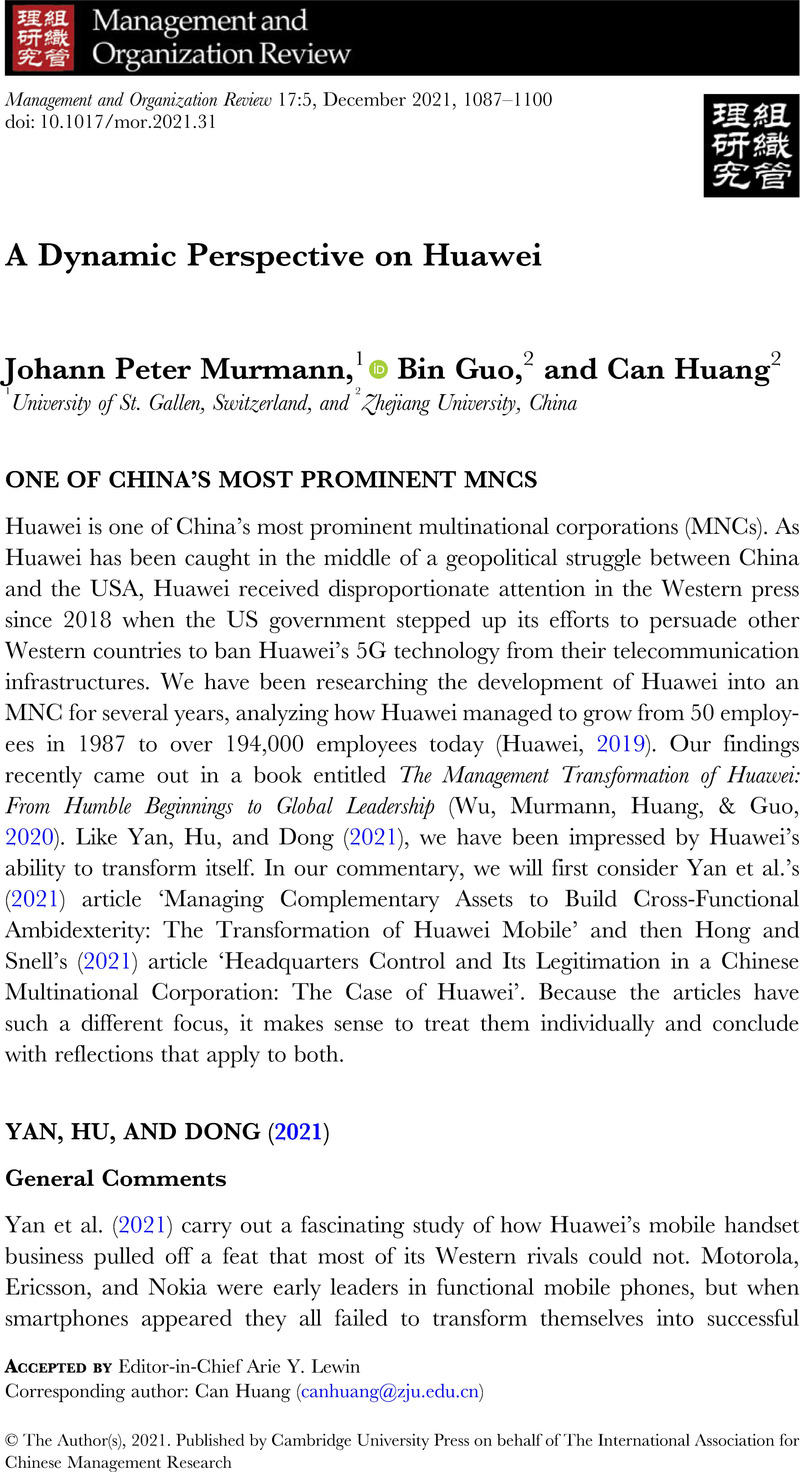Crossref Citations
This article has been cited by the following publications. This list is generated based on data provided by Crossref.
Yao, Li
Li, Jun
Chen, Kaihua
and
Yu, Rongjian
2024.
Winning the second race of technology standardization: Strategic maneuvers in SEP follow-on innovations.
Research Policy,
Vol. 53,
Issue. 6,
p.
105023.
Yang, Wei
and
Zhang, Yurong
2025.
Standardization catch-up strategy of latecomer enterprises: a longitudinal case of Huawei.
Humanities and Social Sciences Communications,
Vol. 12,
Issue. 1,



Target article
Managing Complementary Assets to Build Cross-Functional Ambidexterity: The Transformation of Huawei Mobile
Related commentaries (1)
A Dynamic Perspective on Huawei